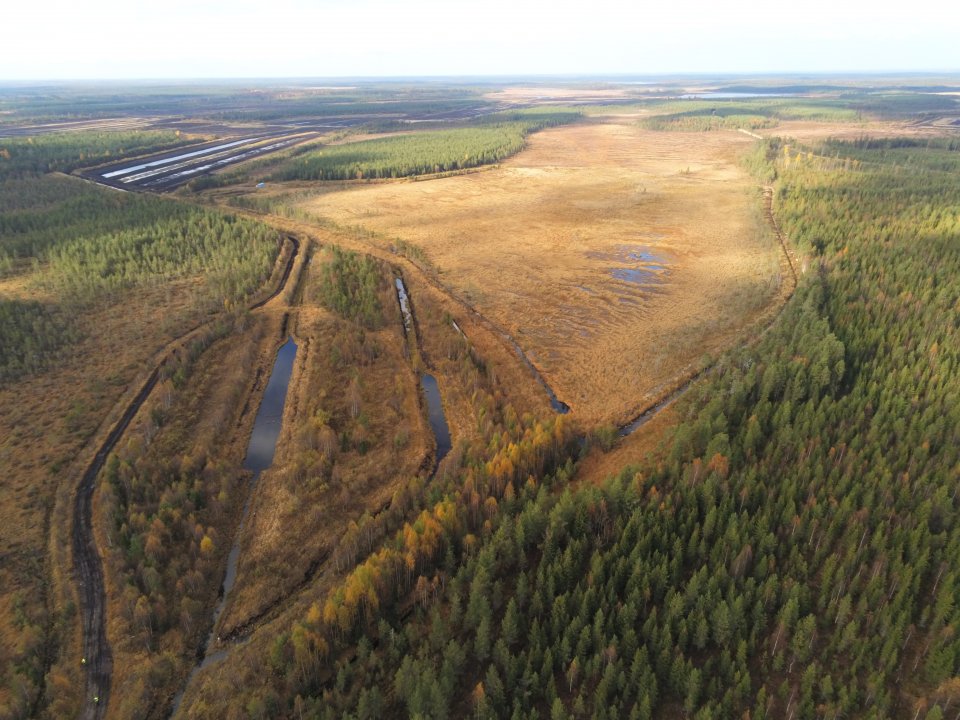
There are vast areas of intensive forestry and agriculture as well as large peat extraction areas in the North of Finnland and around the location of the case study. This leads to changes in hydrology and morphology of the landscape due to draining of peatlands and modifying natural land covers, affecting infiltration, evaporation, run-off, groundwater and surface waters. There is some scattered settlement throughout the region, and in the lower parts of the rivers, more urban areas. In and around the river Iijoki, various restoration actions have been implemented. Now, additional restoration frameworks and activities are planned in Iijoki and Oulujoki catchments.
After peat extraction in the Komppasuo bog, Finnland, was initiated in 1987, it was stopped in 2021 and restoration projects are aiming at bringing the landscape back to a functioning and sustainable ecosystem. The objective is to establish wetland conservation areas from previously drained peatlands, to set up constructed wetlands for water purification, increasing water quality, increasing the amount of suitable habitats for migratory fish and the endangered freshwater pearl mussel (Margaritifera margaritifera) as well as increasing the areas suitable for recreation.
This case study is one of 17 that are part of the EU Horizon2020 project MERLIN - Mainstreaming Ecological Restoration of freshwater-related ecosystems in a Landscape context: INnovation, upscaling and transformation.
- rewetting of former peat extraction areas
- restoration of drained peatlands
- setting up constructed wetlands for water purification
- environmental flow applications
- new practices in forestry and agriculture
- increased carbon sequestration
- reduced carbon emmission
- increased biodiversity / protection of highly specialized, rare species that depend on functioning wetlands
- increased recreational value
- Increase infiltration / Water storage
- Reduce run-off
- Carbon sequestration and storage
- Restoring ecosystems and their functions
- Increase achievements of biodiversity targets
- Increase awareness of NBS solution & their effectiveness and co benefits
- Social inclusion
Further information
- 6. Clean Water and Sanitation
- 7. Affordable and Clean Energy
- 12. Responsible Consumption and Production
- 13. Climate Action
- 14. Life Below Water
- 15. Life On Land
